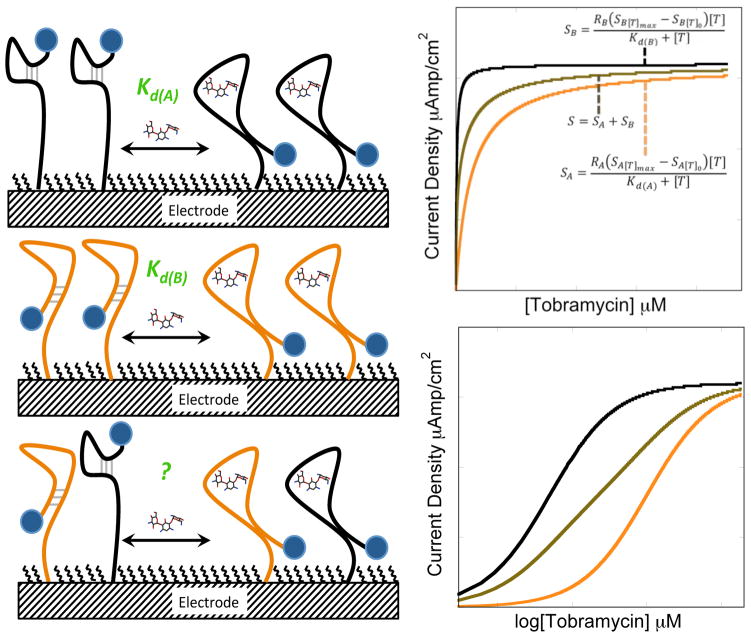Figure 1.
Aptamers engineered to undergo different conformation changes (top left and middle) in the presence of the same target results in different analytical figures of merit for the resulting sensor, including sensitivity and dissociation constants (Kd(A) and Kd(B)). Sensors fabricated with mixtures of aptamers with different affinities for the same target (bottom left) produce sensors with tunable analytical performance based on the ratio of the two aptamers. For example, the predicted sensor response of a sensor employing a 50:50 mixture of high- and low-affinity aptamers falls right in between the responses of sensors fabricated with 100% high-affinity or low affinity aptamers.

